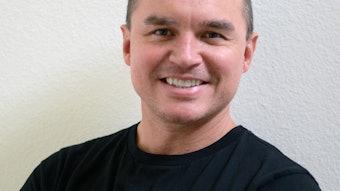.png?auto=format%2Ccompress&q=70&w=700)
Catherine Maley, MBA
I’ll bet you dislike the “M” word, don’t you? And just in case you don’t know, the M stands for marketing. But marketing has gotten a bad name because it got lumped with the truly dreaded word and that’s advertising.
Let’s define these terms. Advertising is the process of getting your message out to the masses in an attempt to attract total strangers to your practice. But marketing is so much more than advertising. It doesn’t even include external advertising if you do it right. And, marketing is definitely not about spending a ton of money on ego-gratifying, image-building ads that may make you feel good but do nothing to get your phone to ring.
Marketing is all about education. The goal of good marketing is to attract your preferred patients to you, educate them so they take advantage of all you have to offer, motivate them to return again and again and encourage them to refer their family and friends. Marketing done right attracts your preferred patient to you who is already pre-qualified, pre-sold and ready to say yes to you.
So, the absolute marketing essentials you need can be grouped into three components: image marketing, in-house signage, and internal communications. Below each is discuss in more detail.
Image Marketing
Simply put, image marketing is creating the image you want of your practice. Because your image tells your prospective patients who you are and what you value. So, for example, if you want the higher-end, quality aesthetic patient, your image needs to be that of quality: Quality furniture, rugs, computer equipment, staff dress, your own dress, etc. The difference is in the details and the care you take ensuring your prospective patients have a quality visit with you and your staff.
In-House Signage
Easily-accessible and informative materials educate your visiting patients to help ensure you never hear those dreaded words, “I didn’t know you did that” and they had it done by your competitor. It’s signage that prompts the patient to ask about procedures rather you and your staff feeling as if you have to “sell” or push procedures onto the patients. I call it your “silent selling” tools. And, it’s signage to remind your patients why they love coming to you versus sneaking off to your competitors. Examples of in-house signage include “Meet the Doctor” PR slicks, digital photo frames and menu of services posters.
Internal Communications
Your #1 asset is the relationship you build with your preferred, profitable patients so they stay, return and refer.
Staying connected to the patients who already know, like and trust you so they return again and again and bring their friends with them is where all your leverage is (and where all your profits are).
The point is you already did the hard part and that was to attract this patient to you. Now all you have to do is keep them loyal to you so they return again and again and bring their friends with them. This takes minimal time, money and effort. BUT is critical to your successful practice growth.
Internal communications can include birthday cards, invitations to your holiday event or your patient appreciation Open House, your Mother’s day special offer and so on.
Using these three essential marketing components creates high-quality patients that return and refer. It’s the quality and not the quantity of patients that will give you the most profits while keeping you from wasting money on old-school advertising that just doesn’t work anymore.
Catherine Maley, MBA, is the founder of Cosmetic Image Marketing and author of Your Aesthetic Practice/What Your Patients Are Saying.
Image courtesy of Wikimedia Commons/Phrontis.











